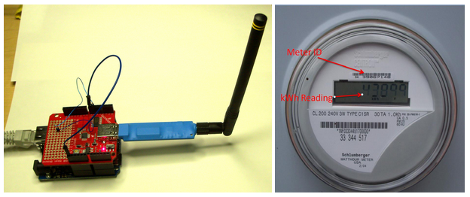
[Jeff] from Gadget Gangster sent in a great tutorial on connecting a cheap Bluetooth module to a Parallax microcontroller. In addition to getting a terminal to the Propeller up and running from his computer, [Jeff] was able to toggle IO pins and even control servos and Android devices – perfect for your next wireless robot.
Connecting the Bluetooth module to the Propeller dev board was easy enough – just two wires for power and two for transmitting and receiving. The computer side of the setup was easy as well; just entering a Bluetooth passcode. Once that was done, the Propeller could talk to the computer and vice versa.
Of course, without the ability to control pins on the microcontroller wirelessly the build was for naught. [Jeff] wrote a simple blinking LED demo. After that, a servo was connected and the build finished off by connecting to an Android terminal.
Although it’s a relatively simple build, we’ve noticed the Propeller doesn’t get much love around the Internet. While it may not have won the microcontroller holy war, it’s nice to see an underrated mcu getting some attention.
















